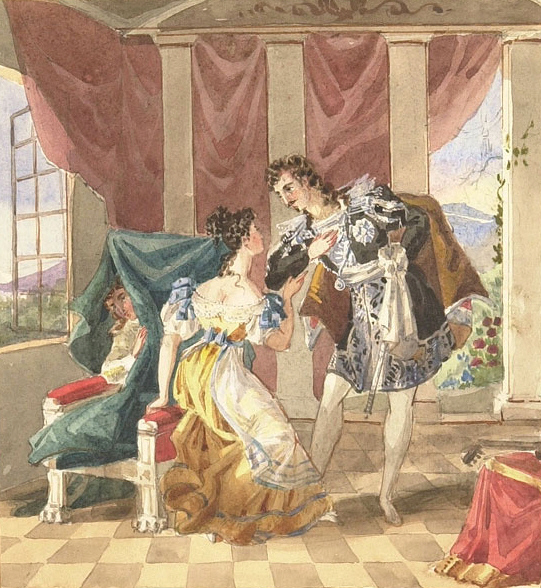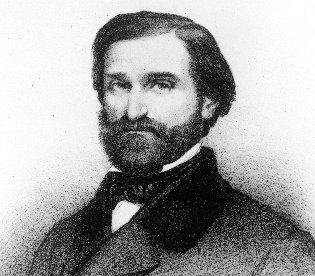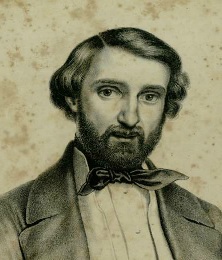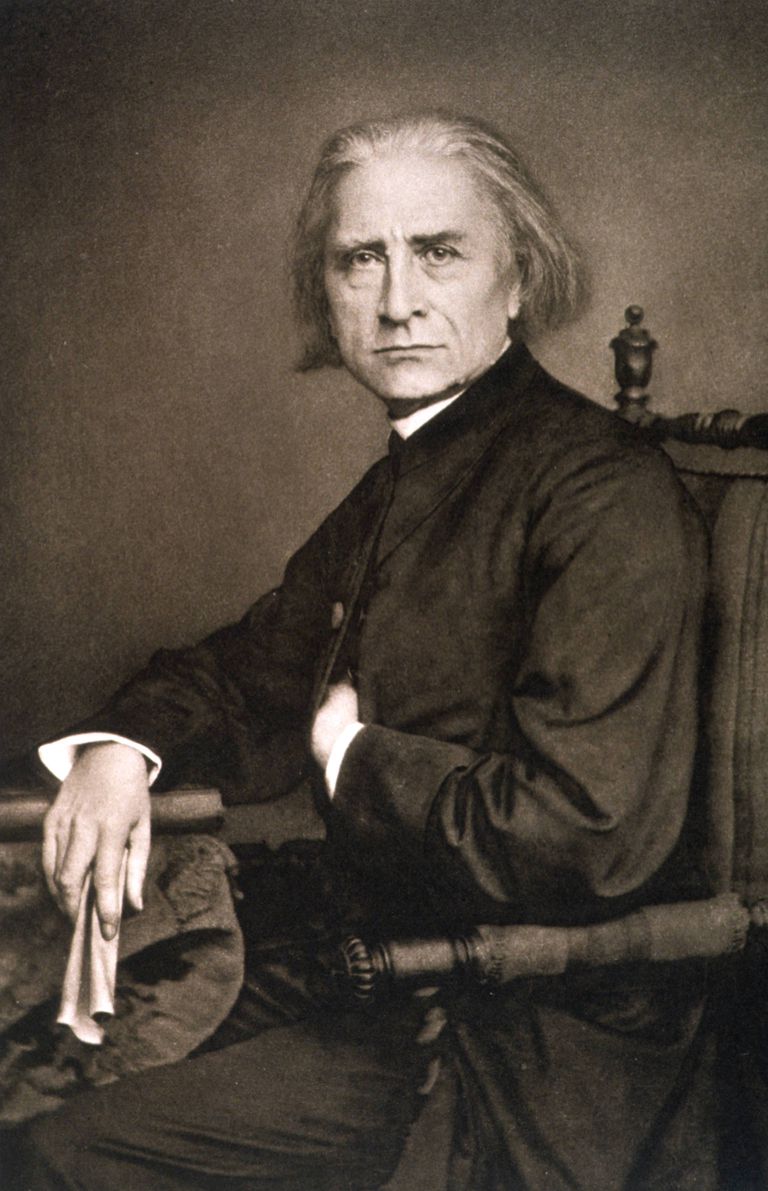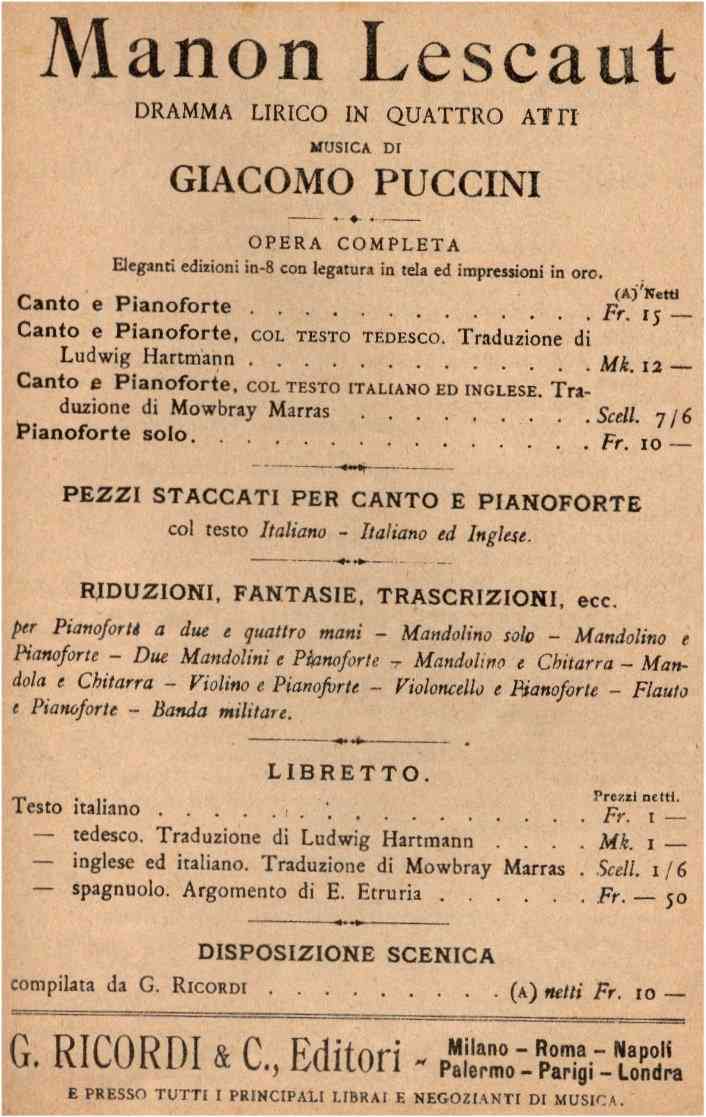|
ГЂngel Г’dena
ГЂngel Г’dena is a Spanish operatic baritone. Biography Born in Tarragona, Spain, he has a degree in Geography and History. He started studying singing and piano in his native town with MercГЁ Obiol and Dolors Aldea, and continued his studies at the Accademia Lirica in Mantua with Katia Ricciarelli and later with Eduardo GimГ©nez. His debut was in 1994 in ''La BohГЁme'', at the Teatro Petruzzelli in Bari Bari ( ; ; ; ) is the capital city of the Metropolitan City of Bari and of the Apulia Regions of Italy, region, on the Adriatic Sea in southern Italy. It is the first most important economic centre of mainland Southern Italy. It is a port and .... Repertory Zarzuela *Luisa Fernanda *Katiuska *La de Manojo de Mosas *Pan y toros *La del Soto del Parral *La revoltosa Spanish Opera *MerlГn *Margarita la Tornera *La Dolores *Atlantida *Una voce in off *El gato con botas Sources *Albesa, Isaa"ГЂngel Г’dena debutarГЎ en Verona"(in Spanish), ''Diari de Tarragona'', 28 ... [...More Info...] [...Related Items...] OR: [Wikipedia] [Google] [Baidu] |
WikiProject Opera
A WikiProject, or Wikiproject, is an affinity group for contributors with shared goals within the Wikimedia movement. WikiProjects are prevalent within the largest wiki, Wikipedia, and exist to varying degrees within Wikimedia project, sibling projects such as Wiktionary, Wikiquote, Wikidata, and Wikisource. They also exist in different languages, and translation of articles is a form of their collaboration. During the COVID-19 pandemic, CBS News noted the role of Wikipedia's WikiProject Medicine in maintaining the accuracy of articles related to the disease. Another WikiProject that has drawn attention is WikiProject Women Scientists, which was profiled by ''Smithsonian Magazine, Smithsonian'' for its efforts to improve coverage of women scientists which the profile noted had "helped increase the number of female scientists on Wikipedia from around 1,600 to over 5,000". On Wikipedia Some Wikipedia WikiProjects are substantial enough to engage in cooperative activities with outsi ... [...More Info...] [...Related Items...] OR: [Wikipedia] [Google] [Baidu] |
Le Nozze Di Figaro
''The Marriage of Figaro'' (, ), K. 492, is a ''commedia per musica'' (opera buffa) in four acts composed in 1786 by Wolfgang Amadeus Mozart, with an Italian libretto written by Lorenzo Da Ponte. It premiered at the Burgtheater in Vienna on 1 May 1786. The opera's libretto is based on the 1784 stage comedy by Pierre Beaumarchais, '' La folle journГ©e, ou le Mariage de Figaro'' ("The Mad Day, or The Marriage of Figaro"). It tells how the servants Figaro and Susanna succeed in getting married, foiling the efforts of their philandering employer Count Almaviva to seduce Susanna and teaching him a lesson in fidelity. Considered one of the greatest operas ever written, it is a cornerstone of the repertoire and appears consistently among the top ten in the Operabase list of most frequently performed operas. In 2017, BBC News Magazine asked 172 opera singers to vote for the best operas ever written. ''The Marriage of Figaro'' came in first out of the 20 operas featured, with th ... [...More Info...] [...Related Items...] OR: [Wikipedia] [Google] [Baidu] |
Rigoletto
''Rigoletto'' is an opera in three acts by Giuseppe Verdi. The Italian libretto was written by Francesco Maria Piave based on the 1832 play '' Le roi s'amuse'' by Victor Hugo. Despite serious initial problems with the Austrian censors who had control over northern Italian theatres at the time, the opera had a triumphant premiere at La Fenice in Venice on 11 March 1851. The work, Verdi's sixteenth in the genre, is widely considered to be the first of the operatic masterpieces of Verdi's middle-to-late career. Its tragic story revolves around the licentious Duke of Mantua, his hunch-backed court jester Rigoletto, and Rigoletto's daughter Gilda. The opera's original title, ''La maledizione'' (The Curse), refers to a curse placed on both the Duke and Rigoletto by the Count Monterone, whose daughter the Duke has seduced with Rigoletto's encouragement. The curse comes to fruition when Gilda falls in love with the Duke and sacrifices her life to save him from the assassin hired by he ... [...More Info...] [...Related Items...] OR: [Wikipedia] [Google] [Baidu] |
Nabucco
''Nabucco'' (; short for ''Nabucodonosor'' , i.e. "Nebuchadnezzar II, Nebuchadnezzar") is an Italian-language opera in four acts composed in 1841 by Giuseppe Verdi to an Italian libretto by Temistocle Solera. The libretto is based on the biblical books of Books of Kings, 2 Kings, Book of Jeremiah, Jeremiah, Book of Lamentations, Lamentations, and Book of Daniel, Daniel, and on the 1836 play by Auguste Anicet-Bourgeois and Francis Cornu. However, Antonio Cortese's ballet adaptation of the play (with its necessary simplifications), given at La Scala in 1836, was a more important source for Solera than the play itself. Under its original name of ''Nabucodonosor'', the opera was first performed at La Scala in Milan on 9 March 1842. ''Nabucco'' is the opera that is considered to have permanently established Verdi's reputation as a composer. He commented that "this is the opera with which my artistic career really begins. And though I had many difficulties to fight against, it is cert ... [...More Info...] [...Related Items...] OR: [Wikipedia] [Google] [Baidu] |
Samson Et Dalila
''Samson and Delilah'' (), Op. 47, is a grand opera in three acts and four scenes by Camille Saint-SaГ«ns to a French libretto by Ferdinand Lemaire. It was first performed in Weimar at the (Grand Ducal) Theater (now the Staatskapelle Weimar) on 2 December 1877 in a German translation. The opera is based on the Bible, Biblical tale of Delilah#Biblical narrative, Samson and Delilah found in Chapter 16 of the Book of Judges in the Old Testament. It is the only opera by Saint-SaГ«ns that is regularly performed. The second act love scene in Delilah's tent is one of the set pieces that define French opera. Two of Delilah's arias are particularly well known: "" ("Spring begins") and "" ("My heart opens itself to your voice", also known as "Softly awakes my heart"), the latter of which is one of the most popular recital pieces in the mezzo-soprano/contralto repertoire. Composition history In the middle of the 19th century, a revival of interest in Choir, choral music swept France, a ... [...More Info...] [...Related Items...] OR: [Wikipedia] [Google] [Baidu] |
L'italiana In Algeri
''L'italiana in Algeri'' (; ''The Italian Girl in Algiers'') is an operatic ''dramma giocoso'' in two acts by Gioachino Rossini to an Italian libretto by Angelo Anelli, based on his earlier text set by Luigi Mosca. It premiered at the Teatro San Benedetto in Venice on 22 May 1813. The music is characteristic of Rossini's style, remarkable for its fusion of sustained, manic energy with elegant, pristine melodies. Composition history Rossini wrote ''L'italiana in Algeri'' when he was 21. Rossini stated that he composed the opera in 18 days, though other sources claim that it took him 27 days. Rossini entrusted the composition of the recitatives as well as the aria "Le femmine d'Italia" to an unknown collaborator. The opera is notable for Rossini's mixing of opera seria style with opera buffa. The overture is widely recorded and performed today, known for its distinct opening of slow, quiet pizzicato basses, leading to a sudden loud burst of sound from the full orchestra. This "surpr ... [...More Info...] [...Related Items...] OR: [Wikipedia] [Google] [Baidu] |
La Cenerentola
("Cinderella, or Goodness Triumphant") is an operatic in two acts by Gioachino Rossini. The libretto was written by Jacopo Ferretti, based on the libretti written by Charles-Guillaume Г‰tienne for the opera '' Cendrillon'' with music by Nicolas Isouard (first performed Paris, 1810) and by Francesco Fiorini for with music by Stefano Pavesi (first performed Milan, 1814). All these operas are versions of the fairy tale '' Cendrillon'' by Charles Perrault. Rossini's opera was first performed in Rome's Teatro Valle on 25 January 1817. In this variation of the fairy tale, the wicked stepmother is replaced by a stepfather, Don Magnifico. The Fairy Godmother is replaced by Alidoro, a philosopher and tutor to the Prince. Cinderella is identified not by a glass slipper but by her silver ring. The supernatural elements that traditionally characterize the Cinderella story were removed from the libretto simply for ease of staging. Rossini composed when he was 25 years old, following t ... [...More Info...] [...Related Items...] OR: [Wikipedia] [Google] [Baidu] |
Il Barbiere Di Siviglia
''The Barber of Seville, or The Useless Precaution'' ( ) is an ''opera buffa'' (comic opera) in two acts composed by Gioachino Rossini with an Italian libretto by Cesare Sterbini. The libretto was based on Pierre Beaumarchais's French comedy ''The Barber of Seville'' (1775). The premiere of Rossini's opera (under the title ''Almaviva, o sia L'inutile precauzione'') took place on 20 February 1816 at the Teatro Argentina, Rome, with designs by Angelo Toselli. Rossini's ''Barber of Seville'' is considered to be one of the greatest masterpieces of comedy within music, and has been described as the opera buffa of all "opere buffe". After two centuries, it remains a popular work. Composition history Rossini's opera recounts the events of the first of the three plays by French playwright Pierre Beaumarchais that revolve around the clever and enterprising character named Figaro, the barber of the title. Mozart's opera ''The Marriage of Figaro,'' composed 30 years earlier in 1786, i ... [...More Info...] [...Related Items...] OR: [Wikipedia] [Google] [Baidu] |
Le Villi
''Le Villi'' (''The Willis'' or ''The Fairies'') is an opera–ballet in two acts (originally one) composed by Giacomo Puccini to an Italian libretto by Ferdinando Fontana, based on the short story "Les Willis" by Jean-Baptiste Alphonse Karr. Karr's story was in turn based in the Central European legend of the Supernatural beings in Slavic religion#Vila, Vila, also used in the ballet ''Giselle''. The opera, in its original one-act version, premiered at Milan's Teatro Dal Verme, on 31 May 1884. A performance typically lasts 64 minutes. Compositional history ''Le Villi'' is Puccini's first stage work. It was written for 's first of four musical competitions, advertised in April 1883, for a new, unperformed opera "inspired by the best traditions of Italian opera", which could be "idyllic, serious, or comic", to be judged by a panel including Amintore Galli and Amilcare Ponchielli. Puccini's submission was disqualified because its manuscript was illegible. Puccini's supporters, who i ... [...More Info...] [...Related Items...] OR: [Wikipedia] [Google] [Baidu] |
Manon Lescaut (Puccini)
''Manon Lescaut'' () is an Italian-language opera in four acts composed by Giacomo Puccini between 1889 and 1892 to a libretto by Luigi Illica, Marco Praga and , based on the 1731 novel ''Manon Lescaut, Histoire du Chevalier des Grieux, et de Manon Lescaut'' by Abbé Prévost. The opera was first performed in 1893 in Turin, at the Teatro Regio (Turin), Teatro Regio. Composition history The libretto is in Italian, and was cobbled together by five librettists whom Puccini employed: Ruggero Leoncavallo, Marco Praga, Giuseppe Giacosa, and Luigi Illica. The publisher, Giulio Ricordi, and the composer himself also contributed to the libretto. So confused was the authorship of the libretto that no one was credited on the title page of the original score. However, it was Illica and Giacosa who completed the libretto and went on to contribute the libretti to Puccini's next three – and most successful – works, ''La bohème, La Bohème'', ''Tosca'' and ''Madama Butterfly''. Puccini ... [...More Info...] [...Related Items...] OR: [Wikipedia] [Google] [Baidu] |
